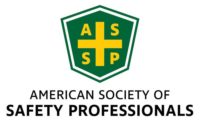The Robert C. Byrd Mine Safety Protection Act of 2010 went down to defeat in the U.S. House of Represenatives Dec. 8, drawing protests from both the U.S. Department of Labor and the American Society of Safety Engineers.
Named for the late senator from West Virginia – a mine safety advocate – the measure would have increased the enforcement powers of the Mine Safety Health Administration. With a vote of 214-193, the bill failed to capture the necessary two-thirds majority.
Secretary of Labor Hilda L. Solis expressed her disappointment with the outcome in a statement released after the vote. "This commonsense legislation, championed by Representative George Miller, Chairman of the Education and Labor Committee, would be an important step forward in strengthening safety laws for our nation's miners. The measure would compel the worst of the worst in the mining industry to change how they treat their miners.”
She added; "Despite the outcome of today's vote in the House, it is important to note that a majority of the members showed they have run out of patience with those mine operators who refuse to take the safety and health of miners seriously.”
The ASSE, which supported many but not all of the provisions of the mine reform act, raised concerns that Congress is not addressing occupational safety and health reform for all workers.
In a letter to Miller, ASSE President Darryl C. Hill, Ph.D., CSP, wrote; “We understand the difficulty mine operators have had in making mines as safe as we all want them to be. However, the highly visible loss of miners’ lives in mine accidents should not be allowed to cloud the daily death toll of workers in every other kind of workplace across this nation.”
Hill noted that more than eight million Americans employed in a variety of sectors lack the workplace safety protections enjoyed by other workers, and reminded Miller that approximately 14 workers die each day from on-the-job injuries.
Hill urged the committee to revisit the wider issue in the next. “If Congress can address the safety and health of 350,000 miners, it can also address the safety and health of the nearly 125 million other Americans who go to work each day,” he wrote.
Mine safety bill defeated in Congress

